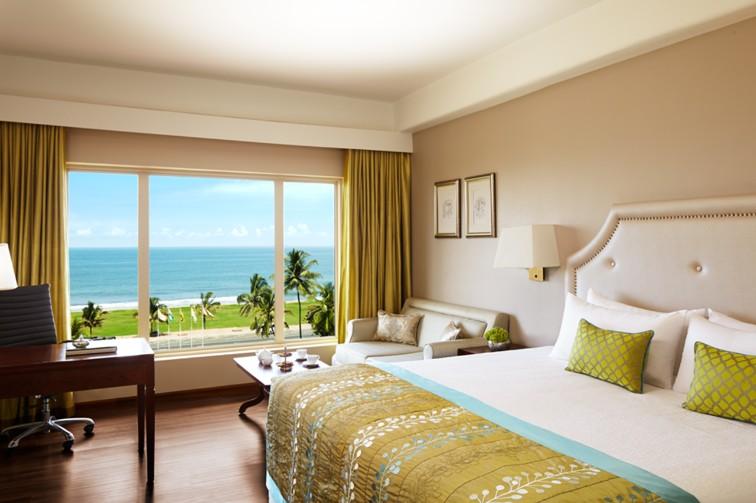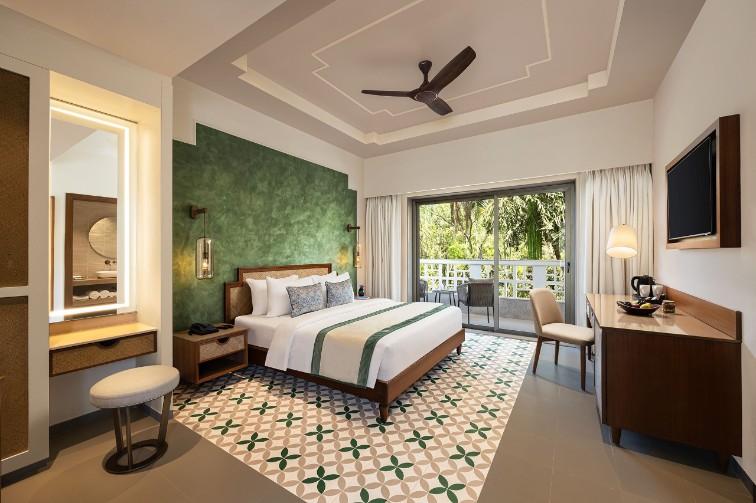
Hotels
•05 min read

Imagine the soft white sand under your feet, vibrant sunsets kissing the horizon, and the gentle rhythm of waves lulling you into a peaceful state of mind. Hawaii is not only a tropical haven with pristine beaches and lush landscapes but also a destination where timing makes all the difference. This blog explores the best times to visit Hawaii, ensuring you reap the maximum benefits—whether it’s budget-friendly deals, ideal weather, peaceful solitude, or family fun. By understanding Hawaii's weather seasons and travel trends, you can plan a trip that aligns perfectly with your travel goals and yields memorable experiences.
Hawaii enjoys a remarkably consistent tropical climate throughout the year, with pleasant temperatures that rarely stray far from the mid-70s to mid-80s Fahrenheit. However, hidden among the islands are diverse microclimates, creating various experiences for every traveler. Generally, the wet season lasts from November through March, while the dry season stretches from April to October. Understanding these shifts will help you balance your desire for sunny outdoor adventures with the occasional misty, lush ambiance that defines Hawaii during the rainy months.
When planning your ideal getaway, it’s important to note that each island has its nuances. For example, Maui offers a perfect blend of dry and occasionally rainy landscapes, whereas Kauai tends to see more frequent rain due to its mountainous terrain. Oahu is known for its balance, making it a consistent favorite among tourists, and the Big Island experiences both tropical coastal weather and cooler highland conditions. Knowing which island fits your preferred weather will help you secure the best Hawaii hotel deals and ensure your travel itinerary aligns with the local environment.
Did You Know?
Hawaii’s wet season is less crowded, offering budget-friendly travel deals and a unique experience of the islands’ lush green landscapes—a perfect option if you don’t mind a few showers and prefer a quieter getaway.
For those looking to explore without breaking the bank, the off-season is the golden period. Mid-January to early March and September to early November are when you’ll often find significant discounts on accommodations and flights. During these months, Hawaii sees fewer tourists, and this relative calm allows travelers to indulge in exploring the islands without competing with huge crowds. In addition, holiday periods like Valentine’s Day in February may see temporary spikes in travel, so keeping an eye on seasonal fluctuations is key to finding those unbeatable Hawaii hotel deals.
Traveling during the off-season presents a mix of opportunities and trade-offs. Fewer visitors mean more personalized experiences at your chosen island accommodations, and quiet neighborhoods offer a relaxing retreat. However, with the enhanced chance of sporadic rain, it is wise to plan indoor entertainment options. Consider visiting local museums, sampling culinary delights in renowned Hawaii restaurants, or simply enjoying the serene atmosphere of a luxury hotel on the island.

If your dream involves endless clear blue skies and outdoor escapades, then Hawaii's dry season is your window to paradise. Spanning from April to October, these months provide the perfect weather conditions for activities like hiking pristine trails, snorkeling among colorful marine life, or simply lounging on the sun-drenched beaches. Tourists flock to popular Hawaii tourist attractions and beach resorts knowing that the weather is on their side, ensuring that the outdoor experiences are as enjoyable as possible.
On the flip side, November through March might be punctuated with intermittent rain, but this period is truly magical for nature enthusiasts. The showers revitalize the islands, accentuating every shade of green and transforming the scenery into a verdant wonderland. This season also aligns with whale watching opportunities, offering a rare glimpse into nature’s captivating performances. When rain does fall, visiting indoor attractions or enjoying the sophisticated ambiance of Hawaii luxury hotels can be equally delightful.
If you prefer a more tranquil escape, consider avoiding the peak travel seasons, which usually overlap with the summer months and winter holidays. Opt for mid-January to early March or September to early November when the visitor influx is lower, enabling a more intimate interaction with Hawaii's serene landscapes and island accommodations. This timing lets you explore without the hustle of peak season chaos, making your vacation a peaceful retreat.
Families often schedule their escapes during the summer (June through August) and winter holidays (December to January) because schools are out, and there's a plethora of organized kid-friendly activities. These peak times are popular among Hawaii beach resorts that cater to family entertainment with special programs designed to create lifelong memories. Despite the larger crowds, booking accommodations early and exploring the varied attractions can still lead to an enjoyable family vacation.
This period is ideal for those on a budget, as it offers lower prices on hotel stays and flights. Not only is it a prime time for savings, but it also aligns with the beginning of Hawaii’s wet season, providing a unique opportunity for whale watching and enjoying the islands when they are at their delightfully dewy best. Be aware that February might see a spike in travel due to Valentine’s Day, so planning ahead is essential.
The dry season is in full swing during these months, making it a popular time for outdoor enthusiasts. The weather is consistently sunny, flowers bloom in vibrant colors, and there are fewer tourists than in the peak summer period. This window is perfect for those looking to book Hawaii travel guides and secure a relaxing yet lively vacation experience without the rush.

Summer in Hawaii means warm, inviting weather ideal for beach activities, festivals, and cultural events. The islands buzz with energy as both locals and tourists enjoy the season’s events. Despite the higher temperatures, these months maintain a welcoming vibe, making them ideal for family vacations. Expect the highest energy and bustle in popular spots, but the loaded agenda of events and festivals can make the trip worthwhile.
Fall offers a superb mix of off-season advantages with the added magic of holiday celebrations. The weather becomes slightly more unpredictable, yet the overall decrease in visitors provides a chance to enjoy a more exclusive experience at your preferred island accommodations. For those eyeing a luxury retreat during the festive season, the occasional gentle rain enhances the unique charm of Hawaii and gives you a break from typical tourist crowds.
Mid-January to early March and September to early November are typically the cheapest times to visit due to the off-season rates and fewer tourists.
Hawaii’s rainy season primarily spans from November to March, though the rain is often localized and brief.
The best months are generally April to June and September to early November, offering ideal weather and fewer crowds, while the worst months depend on your preferences, as summer and winter holidays can be crowded and more expensive.
Hawaii’s dry season, extending from April to October, is perfect for outdoor adventures and beach activities, ensuring consistently sunny days.
Hawaii remains a destination that offers something special no matter when you visit. By understanding the island’s unique tropical climate and its multiple weather seasons, you can tailor your trip to match your preferences—whether you are chasing budget-friendly travel, ideal weather, or family-centered fun. The careful selection of travel dates not only enhances the overall experience but also opens doors to a more intimate interaction with the islands. Explore the rich tapestry of options from off-season peace to peak season festivities, and let Hawaii provide an unforgettable escape that suits your personal travel goals.